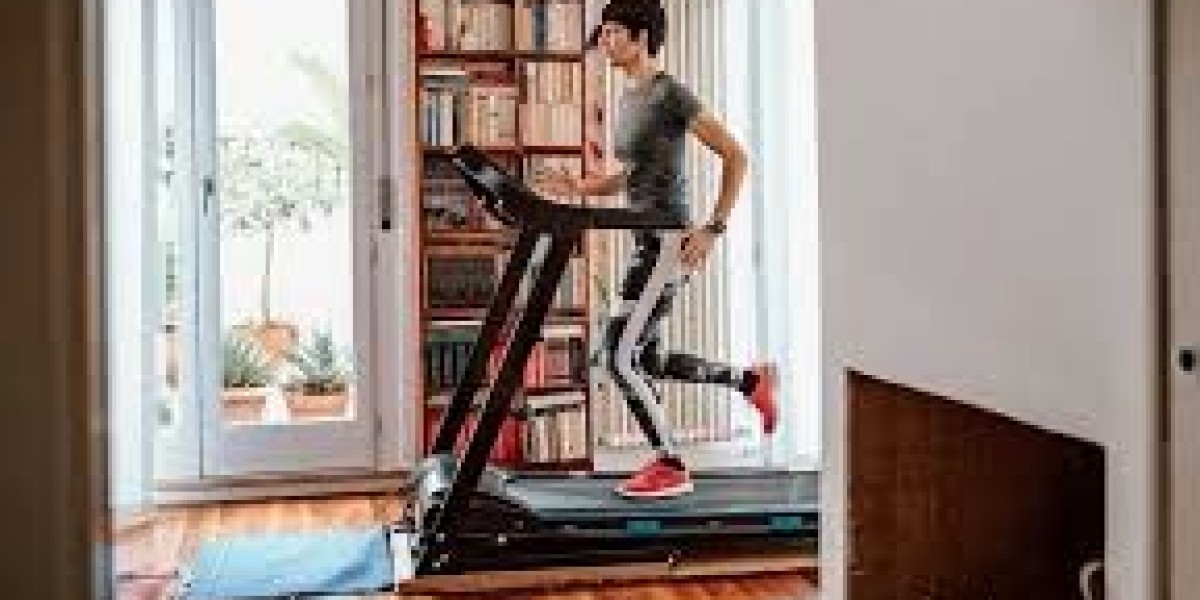Introduction
In today's fast-paced world, staying fit and healthy has become a priority for many. However, finding the time to visit the gym regularly can be challenging. This is where a home treadmill can be a game-changer. A home treadmill allows you to exercise at your convenience, without the need to brave the weather or navigate a busy gym schedule. But with a plethora of options available, choosing the right treadmill can be daunting. This comprehensive guide will help you navigate the myriad of features and considerations to find the perfect treadmill for your home.
1. Understanding Your Fitness Goals
Before diving into the technical specifications, it’s essential to understand your fitness goals. Are you a seasoned runner looking to maintain your marathon training, or are you a beginner aiming to incorporate regular walking or light jogging into your routine? Your goals will significantly influence the type of treadmill you should invest in.
- Walking: If your primary goal is walking, you can opt for a treadmill with a lower top speed and a less powerful motor.
- Running: For regular running, you’ll need a treadmill with a higher top speed, a robust motor, and a larger running surface.
- High-Intensity Training: If you’re into interval training or high-intensity workouts, look for a treadmill with quick speed and incline adjustments.
2. Budget Considerations
Treadmills can range from a few hundred to several thousand dollars. Setting a budget beforehand will help narrow down your options. Generally, higher-priced treadmills offer more features, better build quality, and longer warranties. However, it's possible to find good value in mid-range models that offer a balance of features and affordability.
- Entry-Level: Suitable for walking and light jogging. Prices range from $500 to $1000.
- Mid-Range: Ideal for regular running and some advanced features. Prices range from $1000 to $2000.
High-End: Best for serious runners and intense training. Prices start from $2000 and above.
3. Key Features to Look For
a. Motor Power
The motor is the heart of the treadmill. It determines the treadmill’s performance and durability. Motor power is measured in horsepower (HP) or continuous horsepower (CHP).
- Walking:5 to 2.0 CHP
- Jogging:0 to 2.5 CHP
- Running:5 to 3.0 CHP or higher
A more powerful motor not only supports higher speeds but also ensures smoother operation and greater longevity.
b. Running Surface
The size of the running surface is crucial for comfort and safety. A longer and wider belt provides more room to move, which is especially important for taller individuals and runners with a long stride.
- Walking: Minimum 16” x 50”
- Running: Minimum 20” x 60”
c. Cushioning
Cushioning systems reduce the impact on your joints and provide a more comfortable running experience. Look for treadmills with adjustable cushioning, which allows you to customize the firmness of the deck.
d. Speed and Incline
Speed: Treadmills should have a top speed that matches your fitness goals. For walkers, a maximum speed of 6-8 mph is sufficient, while runners may need up to 12 mph.
Incline: An incline feature allows you to simulate uphill running, increasing the intensity of your workouts. Look for treadmills with at least a 10% incline. Some high-end models also offer decline settings.
e. Stability and Weight Capacity
A stable treadmill with a solid frame is essential for safety, especially at higher speeds. Check the treadmill's weight capacity to ensure it can support your weight. Look for models with a higher maximum weight capacity, as they tend to be more robust and durable.
4. Technological Features
a. Console and Display
The console is the control center of the treadmill. A good console should be user-friendly and provide all the necessary information at a glance, such as speed, distance, time, calories burned, and heart rate.
b. Workout Programs
Preset workout programs can add variety and structure to your training. Look for treadmills with a range of programs tailored to different fitness levels and goals.
c. Connectivity
Modern treadmills often come with Bluetooth and Wi-Fi connectivity, allowing you to sync your workouts with fitness apps, track your progress, and even stream entertainment while you exercise.
d. Heart Rate Monitoring
Heart rate monitors can help you stay within your target heart rate zone, optimizing your workouts. Treadmills may come with built-in pulse grips or chest strap compatibility for more accurate readings.
5. Space and Storage
a. Folding Design
If space is a concern, a folding treadmill can be a great option. Folding treadmills have a hydraulic system that makes it easy to fold and unfold the deck. Ensure the treadmill locks securely in place when folded to avoid accidents.
b. Footprint
Measure the space where you plan to place the treadmill, considering both the operational and folded dimensions. Ensure you have enough room for safe and comfortable use.
6. Durability and Maintenance
A treadmill is a significant investment, so durability is key. Look for models with a sturdy frame and high-quality components. Regular maintenance, such as lubricating the belt and keeping the treadmill clean, will extend its lifespan.
7. Warranties and Customer Support
A good warranty is a sign of the manufacturer’s confidence in their product. Look for treadmills with comprehensive warranties that cover the motor, frame, and parts. Customer support is also crucial for troubleshooting and repairs.
8. Brand Reputation and Reviews
Researching the brand and reading customer reviews can provide insights into the treadmill's performance and reliability. Reputable brands often offer better customer service and support.
9. Additional Features
a. Entertainment Options
Many modern treadmills come with built-in screens for streaming videos or browsing the internet. If entertainment is important to you, look for models with high-quality displays and sound systems.
b. Accessory Holders
Convenient features like water bottle holders, tablet stands, and storage compartments can enhance your workout experience.
10. Try Before You Buy
If possible, try out the treadmill in a store before making a purchase. This will give you a feel for its stability, noise level, and overall comfort.
Conclusion
Choosing the right treadmill for your home involves careful consideration of your fitness goals, budget, and available space. By understanding the key features and what to look for, you can make an informed decision that will help you achieve your fitness goals comfortably and effectively. Investing in a quality treadmill can provide years of health benefits, making it a valuable addition to your home gym.



